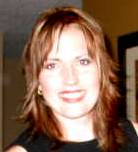
See Marnee and TinyEYE at ASHA 2008 in Chicago!!
Marnee’s Presentations at ASHA:
Friday, November 21 9:30-10:30am: Speech Therapy Telepractice: Efficiencies, Efficacy, & Ethics (Session #0410)
Friday, November 21 at 2:00-3:00pm: Addressing Rural Populations & the Speech-Language Pathologist Shortage With Telepractice (Session #0414)
Visit Booth # 472 and Say Hello!
================================
Types of Play
(The “What” of Play)
Overview
Children interact with their toys in different ways and for different purposes. They engage in the following types of play alone, beside others, and with others. What are they doing?
- Functional Play – Children explore their world through functional play when they bang, shake, push, and dump toys and manipulate materials, such as sand and water. They run and jump again and again. This begins during infancy and then decreases after age 3.
- Trick: Copy what the child is doing. She might copy you back. This is a fun way to teach turn taking and imitation skills.
- Constructive Play – Children create or build something, such as a tower or a craft. Children might do this alone, as in solitary play, or beside another child as in parallel play. Both increase around 18 months and continue to increase through the preschool years.
- Trick: Position yourself near the child as you would in parallel play. Watch closely for non-verbal communication which may be an invitation to play. After a while of watching, you can ask him what you can do to help. Or you can start doing something very interesting with yours and invite him in to help you.
- Dramatic Play – Children act out scenarios. As children become older, more and more of the dramatic play will involve peer interaction and collaboration. Initially, children act out an idea by themselves, which tends to start after the first birthday. By the age of two, you will see two children sitting beside each other ‘pretending’ to care for their babies, but not truly interacting with each other. Three year olds may act out a familiar experience, like going to the doctor, with their friends. By five, children act out truly make-believe experiences, such as taking care of the unicorns in the castle.
- Trick: Put on your acting shoes and play away. Get in on the script -play the part! Join the land of Make-Believe! (By doing this, you can also subtly model advanced play behaviour, ideas, or language. For example, if you are pretending to ride in the boat, you can say and act how the boat is so big and the waves are so high – you are getting so wet…better use a pail to empty out some water…better put up a new sail …oh no an octopus jumped in! It is key to avoid over-using the “fun-one” conversation style and running the whole show. Inspire the children with your animated interest, your suggestions, your “I wonder what….?”
Dramatic Play Check-List
Review this list when checking-in on children’s pretend play – do they have all the ingredients yet? Also, use this list as a prompt for you to know what aspects to model for the children who are still developing these skills.
- Role play – be someone you are not
- Use pretend/play objects to represent real ones
- Engage in make-believe roles and scripts
- Play at least 10 minutes
- Interact with peers
- Use verbal communication
If a school district in your area needs Speech-Language Pathologists, please let me know by email as we at TinyEYE can help!
Have a great day!


Marnee Brick, MSc
Speech-Language Pathologist and Director of of Speech Therapy
TinyEYE Therapy Services (Speech Therapy Telepractice)
http://www.TinyEYE.com-Online Speech Therapy Telepractice

